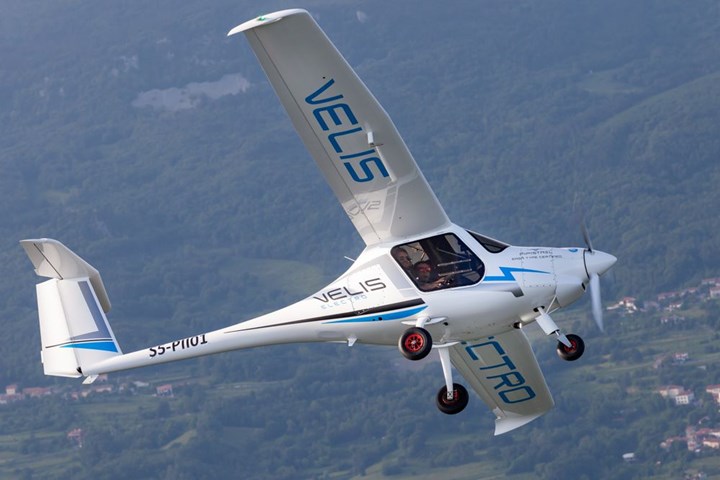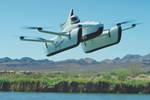Velis Electro all-electric aircraft obtains type certificate
Obtained from EASA, the Type Certification furthers Pipistrel’s goal for sustainable and emissions-free aircraft.

Source | Pipistrel
Small aircraft designer and manufacturer, Pipistrel Aircraft (Ajdovščina, Slovenia), announced that its composites-intensive Velis Electro is the first all-electric airplane to obtain a Type Certification (TC), which was granted on May 18 from the European Aviation Safety Agency (EASA). Pipistrel says the certified two-seater, intended primarily for pilot training, is another step toward its goal for environmentally sustainable and emission-free aviation.
Conceived as a fundamental part of the Velis Training System, Pipistrel says the Velis Electro was designed for easy operation and maintenance, without compromising safety. Employing Pipistrel’s type certified electric engine, the company notes that the aircraft uses a simplified user interface, maintains a reduced number of moving parts to decrease maintenance costs and has a built-in continuous health-monitoring system to mitigate malfunctions. Additionally, the powertrain and batteries are entirely liquid-cooled, and as part of the certification process, have demonstrated their ability to withstand faults, battery thermal runaway events and crash loads. According to Pipistrel, this enhanced reliability doubles the lifespan of powertrain elements in comparison to the previous generation of electric airplanes. Further, the overall reduced operating costs contribute to the affordability of pilot training.
“The type certification of the Pipistrel Velis Electro is the first step towards the commercial use of electric aircraft, which is needed to make emission-free aviation feasible,” says Ivo Boscarol, founder and CEO of Pipistrel Aircraft. “It also provides optimism to other electric aircraft designers, that obtaining the Type Certificate for electric aircraft is possible.”
Pipistrel says it will deliver the first 31 Velis Electro to customers in seven countries in 2020.
Related Content
-
Novel composite technology replaces welded joints in tubular structures
The Tree Composites TC-joint replaces traditional welding in jacket foundations for offshore wind turbine generator applications, advancing the world’s quest for fast, sustainable energy deployment.
-
Hexagon Purus Westminster: Experience, growth, new developments in hydrogen storage
Hexagon Purus scales production of Type 4 composite tanks, discusses growth, recyclability, sensors and carbon fiber supply and sustainability.
-
Recycling end-of-life composite parts: New methods, markets
From infrastructure solutions to consumer products, Polish recycler Anmet and Netherlands-based researchers are developing new methods for repurposing wind turbine blades and other composite parts.













